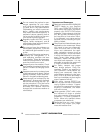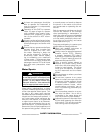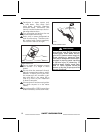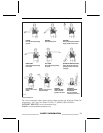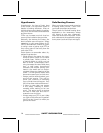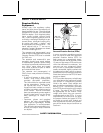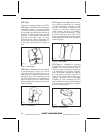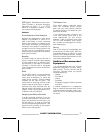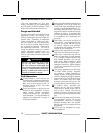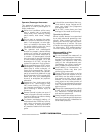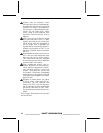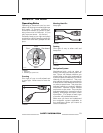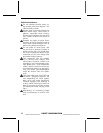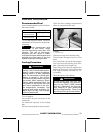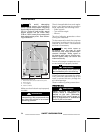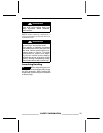
SAFE BOATING PRACTICES
YOU are responsible for y our own
safety, th e s afety of y our passengers,
and the sa fety of fellow boaters. R ide
smart from the start and we all win!
Drugs and Alc ohol
Do not use drugs or drink alcohol while
operating a PWC. Like driving a car,
driving a watercraft requires s ober, at-
tentive care. Operating a watercraft
while intoxicated or under the influ-
ence of drugs is not only dangerous,
but it is also a Federal offense c ar ry-
ing a significant penalty. Thes e laws
are vigorously enforced. The u se of
drugs and alcohol, singly or in combi-
nation, decreases reaction time, im-
pedes jud gm ent, impa irs vi sion, and
inhibits your a bil ity t o s afely operate a
watercraft.
WARNING
Alcohol consumption and boat-
ing do not mix! Operating un-
der the influence endangers the
lives of your passengers and other
boaters. Federal laws prohibit op-
erating a watercraft under the in-
fluence of alcohol or drugs.
Safe Operation
Always keep in mind that as the
throttle le ver is released to idle posi-
tion, less directional control is avail-
able, and as the engine is off, di-
rectional control is lost. You need
throttle to steer.
Know the waters in which the wa-
tercraft is to be operated. Current,
tides, rapi ds, hidden obstacles,
wakes and waves etc. can affect
safe operation. It is not advisable to
operate the watercraft in rough or
inclement weather.
Keep the safety lanyard attached to
the operator’s PFD at all times and
keep it free from handlebars so that
engine stops if operator falls off. Af-
ter riding, remove DE SS ™ k ey from
its post to avoid unauthorized us e by
children or others. If opera tor falls
off the watercraft and safety lanyard
is unattached , the watercraft will
not stop.
Ride within your limits and level of
riding ability. Avoid aggressive ma-
neuvers to r educ e the risk of loss
of control, ejection and coll ision.
Understand and res pec t t he perfor-
mance or your watercraft.
Always ride responsibly and safely.
Use commo n sense and courtesy.
While your wa tercraft has the ca-
pacity of operating at high speeds,
it is s trongly rec om m ended that
high speed o pera tion on ly be ap-
plied when id ea l c onditions exist
and are permitted . Higher spe ed
operation requires a higher degree
of skill and increases the risk o f se-
vere injuries.
The forces generated on the body
of riders while turning, negotiat-
ing wav es or wakes, operating in
choppy waters, or falling off the wa-
tercraft, especially at higher speeds,
may cause injury including the pos-
sibility of broken legs and other
bones or m ore s erious injuries. Re-
main flexible and avoid sharp turns.
In s ha llo w w ater, proceed with
caution and at very low speeds.
Grounding or ab ru pt stops may re-
sult in injury. Debris may also be
picked up a nd be thrown rearward
by the jet pump onto people o r prop-
erty.
Do not use the watercraft’s reverse,
if so equip ped, to stop. You or y our
passenger( s) could be violently
ejected forwa rd onto the handle-
bars or ev en off the watercraft onto
the hazard.
PWCs are not des igned for night-
time operation.
18
_______
SAFETY INFORMATION
________



